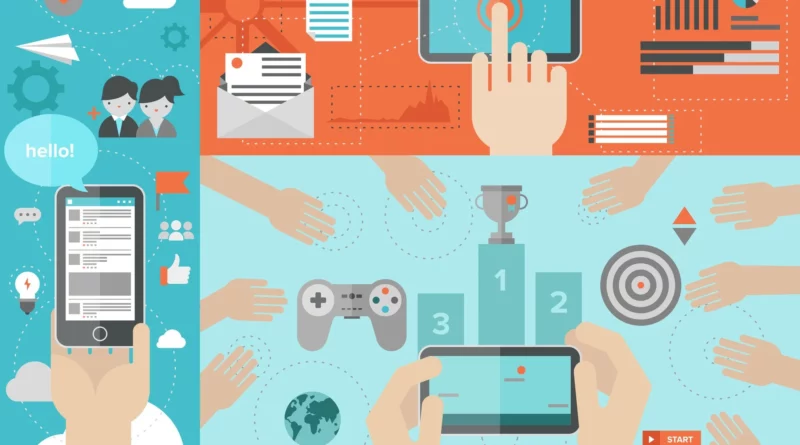5 Amazing Benefits of Gamified Learning for Students
Learning has changed quite a lot in the modern world. These are no longer the days you must confine yourself in a physical classroom to attain knowledge. Today learners can receive instruction from anywhere and at any time. All thanks to technology!
Technology has conquered several areas of life and the education landscape is one of them. The use of AI (artificial intelligence), AR (augmented reality), VR (virtual reality), and gamification is prevalent today. Most of these technologies were known to be an entertainment medium but not anymore.
Gamification in particular was first seen in online games, but it has now entered the learning and training field. Gamification in the education realm precisely refers to the utilization of game elements or mediums in learning.
Usually, this learning methodology requires digital equipment or apps. Also, learners attain points or rewards before crossing to another level. A learner must complete one level successfully to head to another. Also, they can replay for better clarity and comprehension of concepts.
Gamification is used in different learning institutions. Statistics indicate that gamified learning will grow at the rate of 15.4% till 2024. Therefore, regardless of the type of educator or learning institute you run, you can certainly implement gamification in the classroom. But what are the benefits of gamified learning to students?
Top 5 Benefits of Gamified Learning for Students
The major benefits of gamified learning are;
- Cultivates Creativity
With the fact that gamification relies on the latest technologies, mechanisms, and visual elements, it can certainly enhance creativity. Creativity is very essential in learning i.e, it enhances imagination and the application of knowledge. Several studies have shown that creativity is key to learning flexibility and comprehension. Creative students can easily apply knowledge and create new things out of nothing.
However, as a child grows, creativity diminishes and this directly impacts learning and academic success. To improve creativity, teachers can introduce gamified learning in a classroom to help students. Gamification can improve cognitive development and flexibility.
So, if you’re a teacher, you can leverage gamification besides other learning mediums like STEM learning apps and text to teach students.
- Ups Learning Engagement
Engagement refers to the degree to which a learner is immersed in the learning material. It should be noted that engagement in a classroom isn’t all about participation. Certainly, not all participating students are engaged in what is being taught.
However, engagement requires a student to actively listen, digest and comprehend the material. Learners who are engaged in what is being taught have higher chances of applying concepts in their usual life. Also, they find learning meaningful and relevant.
However, low classroom engagement affects knowledge attainment and also impacts future achievements. Therefore, as a teacher, you can introduce your students to gamified learning to improve their engagement.
This will help them have fun and learn at the same time. Also, it will show them how concepts are applicable to normal life. Leverage cost-effective apps for trial before advancing to top-notch learning gamified mediums.
- Increases Retention
It is one thing to learn and another to retain what is taught. More vividly, it is difficult to retain information. Modern teachers are tasked greatly. They must plan lessons, personalize learning material and ensure that students perform well. But how is that impossible with the fact that student attention spans continue to diminish annually?
In order to help students comprehend material and retain concepts, teachers can tap into the power of gamification. Gamified learning is quite different from the traditional learning medium where students listen to teachers and answer questions and that’s it.
Gamified learning comprises active participation and this drives students to generate and share ideas. They can also collaborate for higher results. It generally immerses a learner in what is being visualized and explained.
More so, it is a hands-on learning approach and this bestows experience. These all work perfectly to help students retain or memorize information.
- Upgrades a Learning Environment
To eliminate monotony, a teacher can utilize game-based teaching methods. Not only that, it can be an excellent strategy to outshine the art of classroom management. When students are introduced to new learning techniques, they become more enthusiastic and more ethically bound.
That’s why visuals, study trips, and practicals are part of the education system. A unique learning environment drives creativity and learning motivation. Students also learn new things that can help them upgrade their knowledge and understanding of the world. It is also very essential for learners with disabilities.
However, when students expect the same things with every lesson, they are more likely to become demotivated and disengaged from classroom activities. Therefore, a teacher can use gamification to modify a learning environment.
It not only renders an environment a smart class but also enables students to learn new things like digital literacy. More so, gamified learning isn’t limited to a physical classroom, but can also happen virtually.
This helps students to learn anywhere and attain the adaptability that the modern world requires.
- Improves Learning Experiences
Certainly! Gamified learning is one of the best catalysts for experiential learning. Like virtual reality, gamification alters the learning space and ushers a learner into a digital world where they can literally interact with their surroundings.
Visual learning is reliable and gamification is a visual learning medium that allows students to see what is being taught. More so, they are able to learn while achieving points or rewards. This unique learning technique allows students to have new learning experiences. They also get to understand that concepts are applicable to life. More so, their imagination, creativity, and comprehension are positively impacted.
It should be noted that e-learning experiences are currently preferred by students generally because they alter a learning environment. Therefore a teacher can consider gamified learning mediums to help students have a new experience.
Bottom Line
Like other technologies, gamification has also found its way into the educational landscape. Currently, this learning and teaching technique is used widely and at different levels of education. Gamified learning has proven to have a positive impact on student engagement. Engagement is everything in learning and it also impacts knowledge retention.
Games in learning are powerful because they remove cognitive congestion and activate the mind to learn. More so, they allow students to feel as though they are playing, yet actively learning. Therefore, as a teacher, consider gamification to help your students attain incredible academic success.




